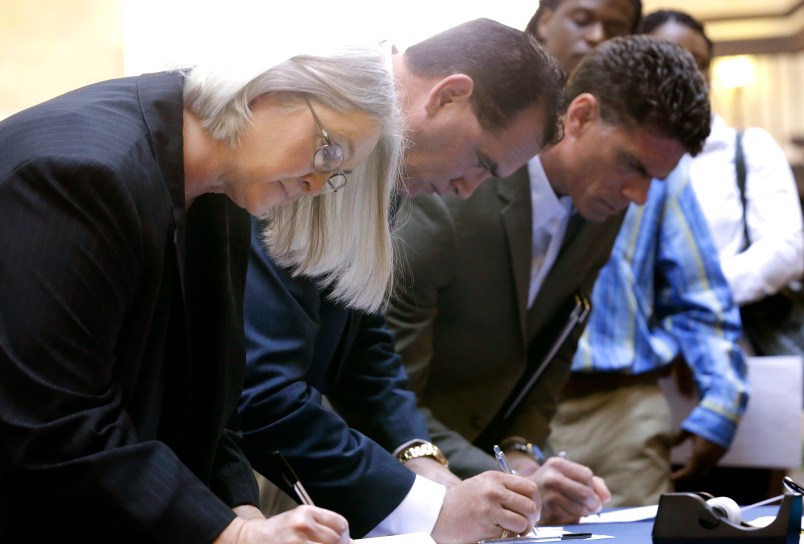Melissa Johnson, a 38-year-old mother of three, had worked as an administrative assistant at the same metro-Detroit law firm for 15 years—her co-workers were like family. But when the Great Recession hit in 2007, Melissa was laid off. Devastated, she signed up for unemployment benefits, and when no work appeared, she began retraining to become a nurse. Unemployment insurance paid Melissa a portion of her former salary for the duration of her training. Without those benefits, her home would have gone into foreclosure. When we spoke with Melissa in summer 2013, she remained in her home and was happily working as a nurse.
Melissa’s name has been changed to protect her privacy, but her story is real – and far from unique. According to Census estimates, unemployment benefits kept 1.7 million people, including both jobless workers and their families, out of poverty in 2012. Yet, after two months of debate, legislation that would have provided emergency unemployment benefits for people like Melissa failed to pass a procedural hurdle in the Senate on Thursday. During these months of lapsed benefits, Washington and the general public intensely debated the details around this potential one-time funding fix. But while the financing of emergency benefits was the subject of scrutiny, the endemic flaws in the financing of the unemployment insurance program as a whole went largely unmentioned.
Many politicians talk about unemployment insurance as if the system is incapable of supporting itself financially. But the truth is that unemployment insurance, especially in ordinary times, could largely pay for itself – and that was what President Roosevelt intended when the program launched in 1935. The program was to be financed largely by state employer payroll contributions, much like Social Security. The federal government also levied its own unemployment insurance tax on employers to pay for administration of the program. Yet unlike Social Security, key provisions of the unemployment insurance system have remained unchanged since the New Deal.
The failure to update unemployment insurance contributions to keep pace with wage growth is a root cause of today’s problems. While Social Security contributions have increased along with average wages, unemployment insurance contributions remain relatively unchanged. In fact, adjusted for inflation, the total amount of wages subject to unemployment insurance taxes has actually fallen.
The figure below tells the story. After accounting for inflation, the total amount of wages subject to Social Security contributions rose from about $50,000 in 1939 to nearly $120,000 today, while the amount of wages subject to unemployment insurance contributions in the average state fell from about $50,000 to around $17,000. As a result, in most states employers make the same unemployment insurance contribution regardless of whether a worker earns $20,000 or $150,000 per year. Of course, if they lose their jobs, the workers who earned $150,000 while employed receive more in benefits.

But it’s not just states that contribute to the financing of the unemployment insurance program. The federal government, too, contributes to the Unemployment Insurance system through a tax on workers’ wages. Just as state contributions have been frozen in time, the federal taxable wage base has been set at $7,000 since 1983.
The implication is clear: both states and the federal government need to update their unemployment insurance contributions to match growth in wages, just as the federal government does with Social Security. This would strengthen state unemployment insurance finances and reduce the need for the federal government to bail them out.
Is such a change politically possible? We think so. Americans have historically been very supportive of worker and employer contributions to social insurance programs, like Social Security, that offer visible benefits to workers and their families. Further, the tax is currently low, and the increases necessary to fix the system are modest. Today, for each worker earning $7,000 or more, the federal government collects only $42 per year. The public recognizes that this is a small amount in comparison with the incredible help that unemployment benefits provide for workers like Melissa.
Melissa was devastated by her spell of unemployment, but her unemployment benefits were there to cushion the blow. It is time for Congress to take a long-range look at how we finance the Unemployment Insurance system as a whole. Now is not the time to walk away from larger questions about how to pay for a critical piece of the safety net for American workers.
Alix Gould-Werth is a doctoral candidate in Sociology and Social Work at the University of Michigan. Alexander Hertel-Fernandez is a doctoral candidate in Government and Social Policy at Harvard.






